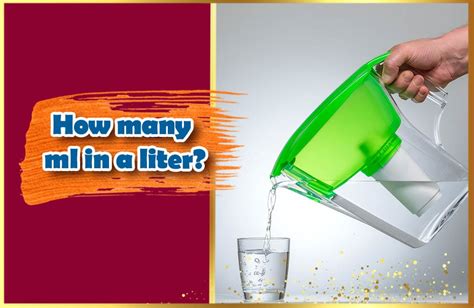5 Liters Is How Many Milliliters
Kalali
Mar 31, 2025 · 4 min read

Table of Contents
5 Liters is How Many Milliliters: A Comprehensive Guide to Metric Conversions
Understanding metric conversions is crucial in various fields, from cooking and baking to scientific research and engineering. One common conversion involves liters and milliliters, two units of volume within the metric system. This comprehensive guide will delve into the conversion of 5 liters to milliliters, exploring the underlying principles and offering practical applications. We’ll also touch upon related conversions and offer tips for mastering metric conversions.
Understanding Liters and Milliliters
Before we dive into the conversion, let's establish a clear understanding of liters and milliliters. Both are units of volume in the metric system, a decimal system based on powers of 10. This makes conversions relatively straightforward.
-
Liter (L): The liter is a fundamental unit of volume. It's defined as the volume occupied by one kilogram of pure water under standard conditions. Think of it as a common unit for measuring liquids, such as milk, juice, or gasoline.
-
Milliliter (mL): The milliliter is a subunit of the liter. The prefix "milli" indicates one-thousandth (1/1000) of a unit. Therefore, one milliliter is one-thousandth of a liter. Milliliters are often used for smaller volumes, such as medicine dosages, cooking ingredients, or the capacity of small containers.
The Conversion: 5 Liters to Milliliters
The key to converting liters to milliliters (or vice versa) lies in the relationship between the units: 1 liter = 1000 milliliters. This is a fundamental conversion factor that needs to be memorized.
To convert 5 liters to milliliters, we simply multiply the number of liters by the conversion factor:
5 liters * 1000 milliliters/liter = 5000 milliliters
Therefore, 5 liters is equal to 5000 milliliters.
Practical Applications of the Conversion
Understanding this conversion is vital in numerous everyday situations and professional contexts. Here are some examples:
Cooking and Baking:
Recipes often specify ingredients in milliliters, especially for liquids like oils, extracts, or sauces. If a recipe calls for a specific volume in liters, knowing how to convert it to milliliters is essential for accurate measurement and successful cooking. For instance, a recipe requiring 0.25 liters of milk would necessitate 250 milliliters (0.25 L * 1000 mL/L = 250 mL).
Medicine and Healthcare:
In the medical field, precise measurements are paramount. Dosages of liquid medications are frequently expressed in milliliters. Converting larger volumes (like those stored in stock bottles) to milliliters ensures accurate dispensing and administration of the correct dosage.
Scientific Experiments and Research:
Scientific experiments often involve meticulous measurements of liquids. Converting liters to milliliters ensures the accuracy required for experiments, especially in fields like chemistry, biology, and physics, where small variations can significantly impact results.
Engineering and Construction:
Engineering and construction projects often deal with large volumes of liquids, such as water for concrete mixing or fluids in hydraulic systems. Converting between liters and milliliters helps ensure accurate calculations and efficient resource management.
Mastering Metric Conversions: Tips and Tricks
While the liter-to-milliliter conversion is relatively simple, mastering metric conversions generally requires understanding the prefixes and their associated multipliers.
-
Memorize the prefixes: Common prefixes include:
- kilo (k): 1000 times the base unit (1 kilometer = 1000 meters)
- hecto (h): 100 times the base unit
- deca (da): 10 times the base unit
- deci (d): 1/10 of the base unit
- centi (c): 1/100 of the base unit
- milli (m): 1/1000 of the base unit
- micro (µ): 1/1,000,000 of the base unit
-
Use the conversion factor: Always use the appropriate conversion factor. For liters to milliliters, it’s 1000 mL/L. For other conversions, refer to the prefix multipliers mentioned above.
-
Practice Regularly: The best way to master any conversion is through practice. Work through various examples, converting between different units within the metric system.
-
Utilize online converters: Online metric conversion calculators can be useful for checking your work and for more complex conversions.
Beyond Liters and Milliliters: Other Relevant Conversions
While this guide focuses on liters and milliliters, understanding other volume units within the metric system is also beneficial. These include:
-
Cubic centimeters (cm³): 1 milliliter is equivalent to 1 cubic centimeter. This relationship is particularly useful in scientific contexts.
-
Cubic meters (m³): A cubic meter is a much larger unit of volume, often used for measuring larger quantities of liquids or gases.
Understanding the relationships between these units broadens your understanding of volume measurements and enhances your ability to perform various calculations.
Conclusion: The Importance of Accurate Conversions
Accurate conversion of units is essential for clear communication, accurate calculations, and successful outcomes across various fields. The conversion of 5 liters to 5000 milliliters is a fundamental example illustrating the simplicity and importance of understanding the metric system. By mastering this conversion and other related conversions, you enhance your problem-solving abilities and contribute to greater precision and efficiency in your work and daily life. Remember to practice regularly and utilize available resources to strengthen your understanding of metric conversions.
Latest Posts
Latest Posts
-
The Measure Of The Inside Of A Circle
Apr 02, 2025
-
What Percent Is 40 Of 50
Apr 02, 2025
-
What Is 20 Percent Of 20000
Apr 02, 2025
-
Convert 38 Degrees C To Fahrenheit
Apr 02, 2025
-
How Much Is A Half Quart
Apr 02, 2025
Related Post
Thank you for visiting our website which covers about 5 Liters Is How Many Milliliters . We hope the information provided has been useful to you. Feel free to contact us if you have any questions or need further assistance. See you next time and don't miss to bookmark.
